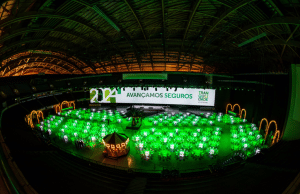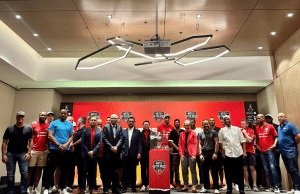- How can communication goals be achieved faster and better?
- How can new communication forms be used effectively for brand communication?
It is not only marketing specialists faced by these questions. Every day new articles, theories and discussions are published on how the internet is changing all of our lives.
The internet has been an integral part of business communication for a long time – not just for B2B, but also for B2C. The advantages of the internet as a communication platform have long been acknowledged – greater proximity to the consumer, more target oriented and innovative. Although the term ‘paradigm shift’ is a big claim, it is appropriate here – because the focus of brand and product communication is shifted from company to consumer. This new relationship ‘at eye level’ is regarded as the ‘new dominant logic of marketing’. But here, people working in marketing find themselves on uncertain ground. Does the brand fall into the hands of the users? Like Goethe’s Sorcerer’s Apprentice, many say: “Spirits that I’ve cited, my commands ignore.”
What happens when I spread a message online? How can I still control the forms of post-communication?
Trend MoSoLo
Which of the current trends have a sustainable impact on communication?
Augmented Reality– A combination of the digital and analogue world. ‘Virtual’ and ‘real’ stop being opposites.
Crowd Sourcing– Many people can cooperate on one project simultaneously.
Cloud Computing– Hard drives are replaced by decentralised networks, which can be accessed from all kinds of devices.
Cloud Gaming– For playing games, cloud gaming ensures highest-quality graphics, even if the connection is slow.
A.I. Web– Artificial intelligence allows semantic analyses and computer-assisted learning of language processes.
Social Search– The search engine is replaced by searches and recommendations via social networks.
3D Web– 3D is the web standard.
Multiple Web Access– The web is available on a diverse range of devices. The boundaries between the devices are further blurred. We access the web via the different devices. For accessing the internet, the smartphone has taken over the computer as the most important device, followed by tablets, TVs, cars, radios and other electronic devices.
Behaviour Follows Device– The device which we use to go online determines how we use the web.
Hyper Connectivity– We are hyper-connected and online 24/7. The web becomes part of us and replaces the key in our pockets.
Web kills TV– The web unites all media and its hybrid forms. Bandwidths continue to increase. The first classic medium that is unable to oppose the trend and is absorbed by the web is the TV. In ten years, it will not exist as a business model anymore.
Social Media Planet– Social media becomes the main reason why people use the web and the main tool for human communication.
What connects these trends? It is ‘hybrid’.
Hybrid Media: The web unites all media and its hybrid forms.
Hybrid Devices: The web is available on a diverse range of devices. The boundaries between the devices are further blurred.
Hybrid Work: The boundaries between work and spare time, staff and customer, producer and consumer are further dissolved.
Hybrid Reality: The digital world becomes a part of the self.
Hybrid Events
Hybrid is also the trend for events and live-marketing.
For VOK DAMS, hybrid events are the combination of events and interactive mobile (smart phones, tablets and their interactive applications including augmented reality, QR codes, Apps …), social (social media platforms including Facebook, Xing, Twitter, YouTube …) and local (location-based services including Foursquare, Facebook Places …) web applications.
The simple formula:
Hybrid Events = Live + MoSoLo* = ROInew**
(*mobile/social/local; **Return on Involvement = word-of-mouth = recommendation to buy).
Hybrid events increase not only the ROI because of their viral impact, but can also help increase sustainability by reducing CO2. Because of the intensive involvement of participants, hybrid events stand for the paradigm shift from focusing on the event to focusing on the participant – from brand-generated to user-generated event.
Reaching communication goals
We are currently experiencing a dramatic change in live communication. A passive visitor becomes an active participant in the communication. Therefore, ROI does not only stand for Return on Investment anymore, but also for Return on Involvement. The stronger the integration of the event participant, the better the chances of them making a positive decision on purchasing or recommending a product or service. Even though a Google study showed in 2011 that online recommendations are crucial for the purchasing decision, more than 75% of decisions are taken after a direct communication. This indicates the potential of live marketing and especially of hybrid events.
Conclusion
The classic event belongs to the past – the future belongs to the hybrid event. No event will be successful without MoSoLo applications. Thus, the hybrid event is the most innovative trend in live marketing. In the future, however, it will not be sufficient to merely react to the changing expectations of event visitors – it will be important to promote the topic of hybrid events when planning and executing events.
Colja M. Dams













